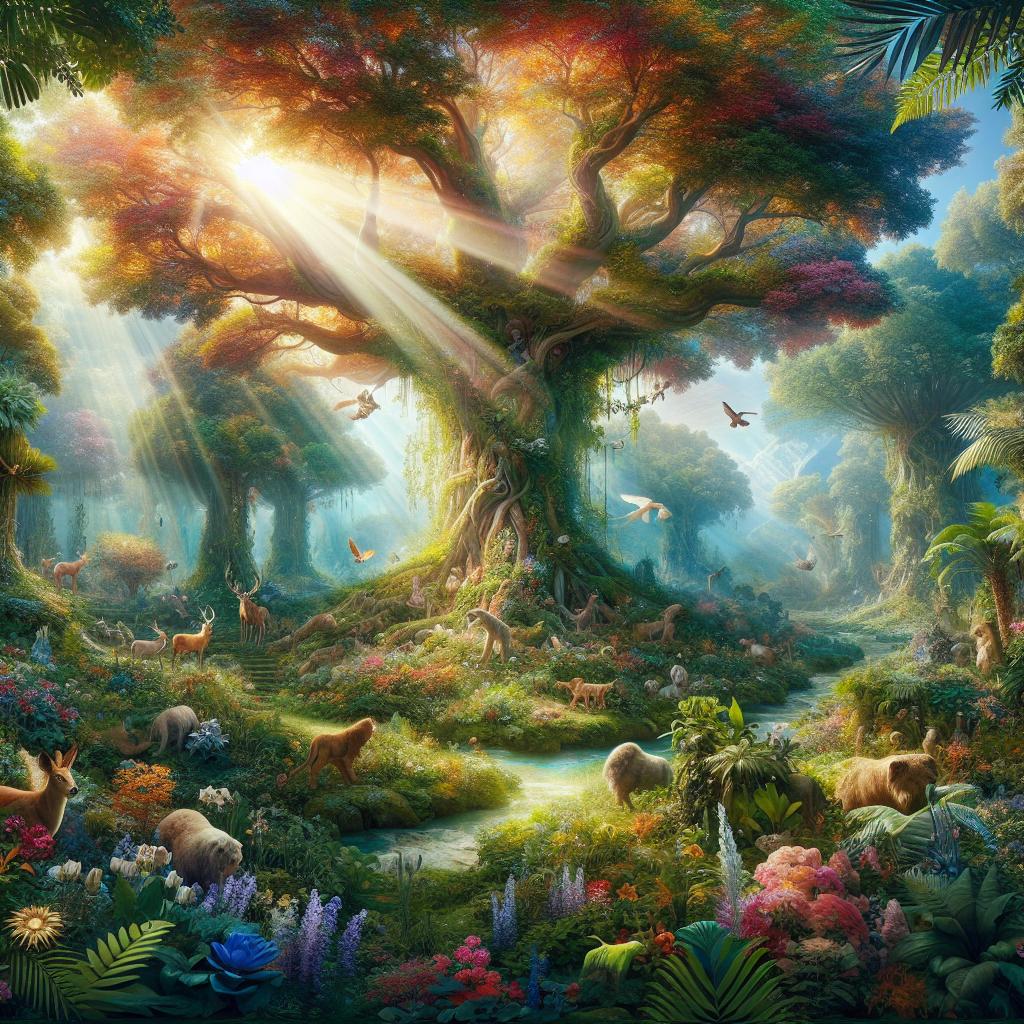
Discovering Eden-2: Unveiling the Spiritual Depth of God's Creation
Published: 28 April 2024
Creation in-depth: Where was Eden?
Part 1 of this article discussed the efforts to locate the Garden of Eden based on textual and geographical evidence. It concluded that there is no reason to believe that Eden can be found on any modern landscape, and no existing geographical candidates fit the biblical description. In this second part, we will explore the geological considerations that further support the idea that Eden cannot be located on the contemporary surface of the Earth.
Geological Considerations
One major consideration when searching for Eden is the geological impact of the global Flood. Geological studies have shown that the landscape of southern Iraq, often proposed as a potential location for Eden, is underlain by six miles (10 km) of sedimentary rock. This raises the question of how the Garden of Eden, which existed on a pre-Flood landscape, could have been situated over such a massive amount of sedimentary rock created during the Flood. The extensive geological changes caused by the Flood, including erosion, deposition of sediments, and tectonic movements, make it difficult to determine if Eden still exists in its original location or if it has been subducted.
Another geological consideration is the complex tectonic setting of the region. According to secular plate tectonic theory, the Persian Gulf is a former rift zone that reversed at some point in the past. The collision between the Arabian Plate and Eurasian Plate is believed to have created the Iranian mountains. However, this theory raises questions about the Mesopotamian Eden hypothesis. If there was no Persian Gulf before the Flood, where did the antediluvian Tigris and Euphrates rivers flow to?
Historical Changes
In addition to geological changes, historical changes to the landscape must also be taken into consideration when searching for Eden. Ancient references suggest that Ur, a city associated with Eden in some interpretations, was located on the shore. However, these references place the ancient shoreline several hundred kilometers inland from the current shoreline. Over time, siltation and other processes have continuously changed the shoreline, making it problematic to use the modern shoreline as a reference point for ancient locations.
Erosion vs Creation
It is important to recognize that the antediluvian world was not shaped by erosion, unlike the modern world. The land emerged from the ocean during creation, but God immediately created plants, stabilizing the ground and preventing massive erosion. Erosion has played a significant role in shaping the post-Flood world, but this means that attempting to match geographic references in Genesis 2 with modern topography may be futile. The primary shaping force on the post-Flood world is erosion, which creates distinct topographic features that were not present in the antediluvian world.
Tigris and Euphrates Not Connected
When trying to correlate the modern Tigris and Euphrates rivers with the rivers described in Genesis 2, one must avoid making errors. While the Tigris and Euphrates appear close to each other on a map, their sources are not near each other. They are separated by other river basins, and no major rivers connect at their sources. This separation is a result of topography and does not support claims that the Tigris and Euphrates have the same source.
Rhine and Danube Drainage Basins
The separation between the Tigris and Euphrates is not unique; it is a common feature of river systems around the world. For example, the Danube and Rhine rivers in Europe have headwaters that are surrounded by different drainage basins. Despite their proximity, nobody claims that they have the same source. This demonstrates that searching for correlations between ancient writing and modern topography is often futile.
Extra-Biblical and Biblical Evidence
Some extra-biblical references, such as ancient Chinese pictographs and the association of mountains with gods in various ancient cultures, suggest a connection between mountains and the Garden of Eden. While speculative, these references support the idea that a mountain was in or near Eden. The biblical accounts also associate a mountain with Eden. Although these references are not definitive, they provide additional context for understanding the geography of Eden.
A Model of Eden
Considering all the evidence, it becomes clear that no modern-day location possesses the characteristics described in the Bible for Eden. The modern landscape has been shaped by geological changes and erosion, making it difficult to find a match for the geographic references in Genesis 2. The lack of comparable features, the erosion-driven shaping of the post-Flood world, and the separation between rivers like the Tigris and Euphrates all point to the conclusion that Eden cannot be located on the contemporary surface of the Earth.
Why This Matters
Understanding the geological considerations and historical changes that impact the search for Eden helps us avoid misguided attempts to pinpoint its exact location on a modern map. Recognizing that the antediluvian world was shaped differently from the modern world allows us to interpret the biblical text accurately. It reminds us that God's creation was distinct and that geological changes have shaped our current landscape.
Think About It
Consider how geological processes like erosion and deposition have shaped different landscapes around the world. Reflect on how these processes would have impacted the land during and after the global Flood. Ponder why multiple ancient cultures associated mountains with divine presence and how this might connect to biblical references to mountains in relation to Eden.
